Remember this?
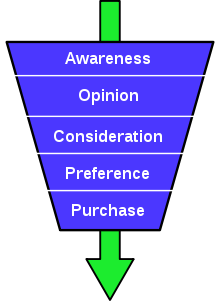
For years and years this linear purchase funnel model was the prevailing marketing theory relative to the customer journey from the moment of first contact to the actual purchase. It was predicated on a model by E. St. Elmo Lewis back in 1989 which is often referred to as the AIDA (Awareness, Interest, Desire, Action) model. You’ll still find these models in a lot of marketing text books (including the one I’m using this semester to teach an integrated marketing class at Creighton).
But, the net changed everything. And as consumer behavior continues to change, new purchase decision theories have emerged.
A 2007 Forrester report makes the point that the traditional purchase funnel may be too linear and that a variety of complex factors are at work, with social media at the center. The model Forrester proposed describes a complex consumer journey, with major decisions based on user-generated content, recommendations from friends, peer reviews and competitive alternatives. This model more closely resembles an intestinal track than a funnel.
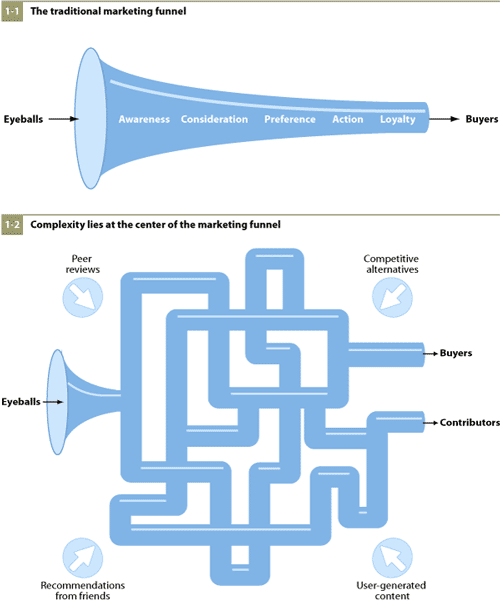
David Armano of Edelman Digital, created a ‘purchase spiral’ model in 2007 that takes a community-focused approach which assumes the biggest purchase decision factor is conversation rather than marketing communications.
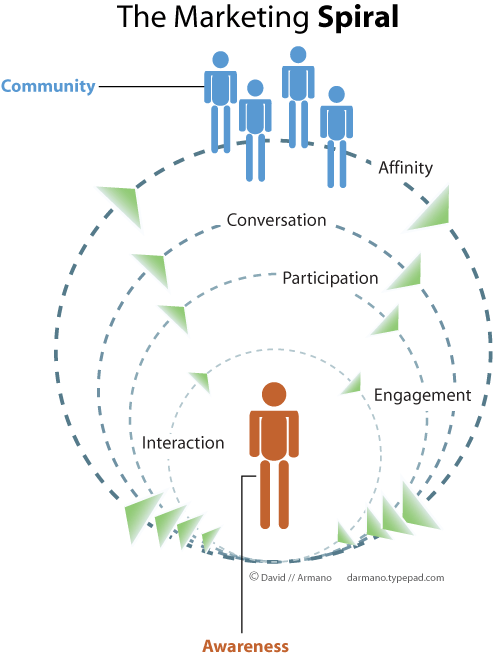
In 2009, McKinsey published results from a worldwide study that illustrated how the consumer decision making journey had changed. And proposed a model called the Consumer Decision Journey that resembled an interactive loop. I remember when I first saw the McKinsey study and the revised decision model, I immediately felt like it better reflected the behavior of today’s empowered consumer than the old linear funnel.
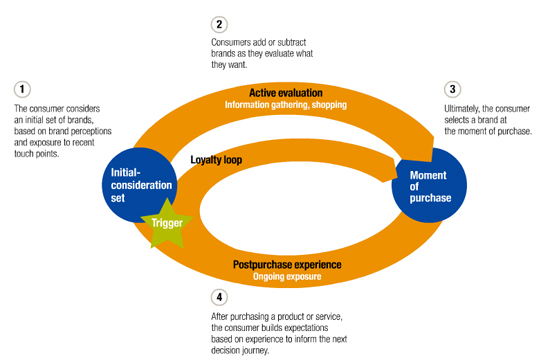
As a marketer with an insatiable curiosity, I’m constantly asking people how they choose companies they do business with and how and why they select the specific products they purchase. I can’t count the number of times I’ve heard, “I google it” when people are describing their process. Every marketer has heard this several times, so it wasn’t at all surprising when Goole coined the phrase Zero Moment of Truth (ZMOT) in 2011 and published an e-book about the theory. ZMOT is that moment when you grab your laptop, mobile phone or some other wired device and start learning about a product or service you’re thinking about trying or buying. In the most recent ZMOT book published in 2012, there is a theoretical purchase model that resembles a flight map.
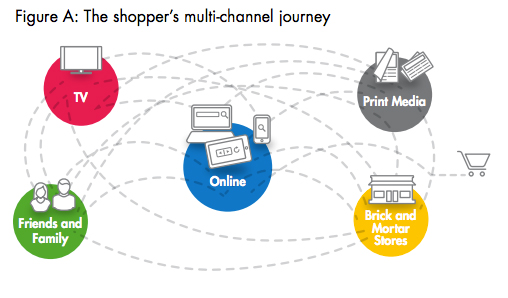
Another new study released just this week, among online shoppers, shows that the evolution of the shopping experience is more than simply “identifying a need, exploring options and purchasing.” Instead, consumers identify 6 common behaviors along the path to purchase and move in “spider web” patterns from one behavior to the next, influenced by different media and devices along the way.
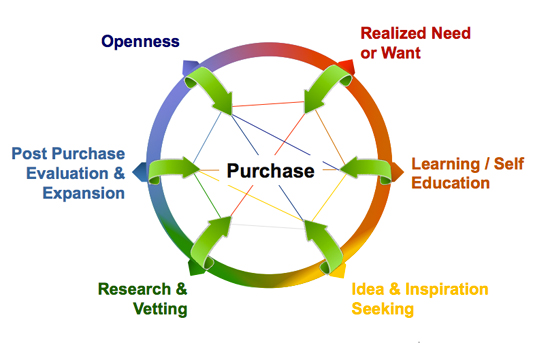
Multiple Models and More to Come
There are a lot of theories and models right now being discussed and debated. A quick Google search will reveal many different (and sometimes conflicting) purchase funnel models. And as consumer behavior continues to evolve and change, you can be sure even more will develop. With the pace of change, it’s a certainty no model will again have the consensus agreement or longevity that the old purchase funnel enjoyed for so many years.
Regardless, we can learn a lot from the various theories, discussions and models.
- The purchase process is more complicated than the traditional linear funnel model.
- Conversation now plays a large part in the purchase decision pathway.
- It’s more important than ever before to understand what triggers your customer’s purchasing process.
- Loyalty shouldn’t be assumed among your buyers. Your brand may be just one of those being considered for repurchase.
- Omni-channel marketing is becoming imperative to sync experiences across all customer touch points.
The purchase model may vary depending on the nature of your business, your customers approach to buying and your approach to selling. The customer decision making for deodorant is very different to that of a daycare. What is important is to identify the key stages in your funnel and decide how you can maximize the chances of progression towards a sale.
So what’s the purchase model for your products?



